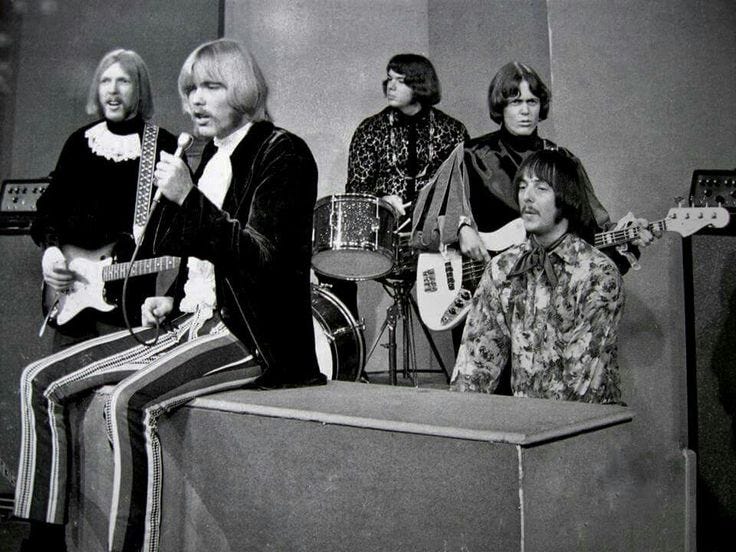Young Duane Allman: The Pete Carr “Hour Glass” Interview
In 1981, Pete Carr Recalled His Experiences With Duane Allman

Pete Carr, who became a renowned studio guitarist and solo artist in his own right, stood alongside Duane Allman the night he was inspired to learn slide guitar. At the time, Pete was bassist in the Hour Glass, Duane and Gregg Allman’s final lineup before the Allman Brothers Band, and he and Duane were sharing an apartment in Los Angeles. One evening they chanced to see Taj Mahal perform at a local club. Taj’s guitarist, Jesse Ed Davis, bottlenecked through a rip-roaring band cover of Blind Willie McTell’s “Statesboro Blues.” According to Pete, Duane instantly became obsessed with mastering both the style and the song, which he’d transform into the Allman Brothers’ signature tune.
Pete’s time playing alongside Duane was short-lived – about a year – but resulted in two memorable projects: the Hour Glass’ The Power of Love album, and the stellar “B.B. King Medley” that begins Duane Allman: An Anthology. They remained friends until Duane’s death in 1971.
Afterwards, Pete, who’d grown up in Daytona Beach, spent a decade as a lead guitarist for the Muscle Shoals Rhythm Section and eventually branched into engineering and producing. His band LeBlanc & Carr had a 1978 hit with “Falling” and landed the opening slot on Lynyrd Skynyrd’s ill-fated Street Survivor’s tour. After Skynyrd’s fatal plane crash, Carr returned to full-time studio work. He played the memorable solos on Rod Stewart’s “Tonight’s the Night,” and was the guitarist of choice for the 1981 Simon & Garfunkel Reunion Tour that climaxed with a performance for a half-million fans in Central Park. Other stand-out Carr parts can be heard on Bob Seger’s “Mainstreet,” Paul Simon’s “Kodachrome,” and Barbra Streisand’s “Make It Like a Memory” and “Woman in Love.” After a long and distinguished career, Pete passed away on June 27. 2020
In 1981, I was preparing materials for my Duane Allman cover story for Guitar Player magazine. Several friends of Duane suggested I contact Pete, who graciously agreed to do an interview focused entirely upon Duane. Portions were assembled into a brief as-told-to feature in magazine. Here is a complete transcription of our conversation.
###
Can you tell me about the first time you met Duane?
Yeah. There’s a club here in town, in Daytona, called the Martinique. I was 16 and starting to play, and I had heard of Duane as being a good guitar player.
What year would this have been?
Oh, ’65, ’66. They had started here in Daytona and played clubs like the Martinique and things like that. I had just started playing at the club, and they were gone. They were up north – I think in Greenwich Village – with their band the Allman Joys. They were playing in Greenwich Village for people up there, and then they came back into town to come home for a while, because they lived here too, in South Daytona. So they came in and I met him. I watched them play – they came up and jammed a little bit. Started talkin’ to ’em. I went up to Gregg and said, “Hey, think you can teach me some guitar things?”
Keep reading with a 7-day free trial
Subscribe to Talking Guitar ★ Jas Obrecht's Music Magazine to keep reading this post and get 7 days of free access to the full post archives.


